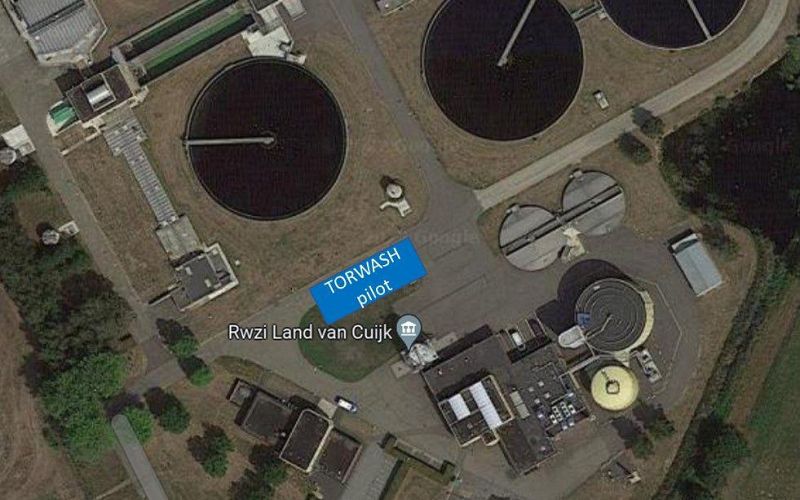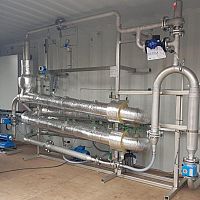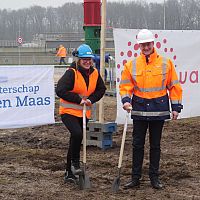create
100% less sludge
together
The RHEA project
Background
The RHEA project was initiated by the plan of water boards to do more than just treatment of wastewater, but also to produce energy and resources. Currently, water treatment plants produce about 1.5 million tons of sewage sludge annually, from which only a limited amount of biogas is generated. The remaining sludge is incinerated at a cost of approximately €150 million, with transport and chemicals contributing to fossil CO2 emissions. There are opportunities to produce significantly more bioenergy and resources from sewage sludge, contributing to the circular economy and reducing sludge processing costs at the same time.
History
Successful pilot tests with a TORWASH® system, capable of processing 25-50 kg of sludge per hour, were conducted at the Almere wastewater treatment plant of the Zuiderzeeland Water Board in 2018 and 2019. The pilot demonstrated that sludge could be converted into a usable solid biofuel, that phosphate could be recovered, and that the treatment plant has the potential to reduce CO2 emissions by 50%. The tests were conducted as part of the TKI-BBEG EnCORE project, and the report can be downloaded from the STOWA website. Download the STOWA report here (Dutch).
Objective
The project participants of the EnCORE project want to further scale-up the TORWASH® technology for sludge dewatering to a capacity of 0.5-1 ton per hour in a new project. The goal of the RHEA project is to demonstrate the TORWASH® technology at a wastewater treatment plant, producing renewable fuel on a larger scale and testing it in a biomass power plant. Additionally, the project aims to demonstrate integration of the technology into an existing water treatment plant, quantify the recovery of phosphate, and verify whether the operational costs of sludge processing are indeed 80% lower than current practice, as shown in the previous project.
Successful completion of this project will enable the technology to be developed further, resulting in a final design of a full-scale plant that can be introduced to the market.
Activities
The project involves designing, constructing, and operating a TORWASH® system with a capacity of 500-1000kg/hour, converting sludge into solid biofuel pellets and biogas at the Land van Cuijk wastewater treatment plant (part of the Aa en Maas Water Board). An extensive testing and optimization program, including duration tests, will be conducted, as well as investigation of other types of sludge, such as sludge produced at a wastewater treatment plant of a meat processing facility.
Outcome
This project will deliver a working TORWASH® system, producing at least 10 tons of press cake for testing at a biomass power plant of Eneco. Sufficient filtrate water will also be produced for pilot-scale testing of digestion and phosphorus recovery. Ultimately, this project should provide sufficient positive results, experience, and confidence to serve as a basis for re-engineering the technology into a commercial system with a capacity for 150,000 p.e. and larger.
Starting shot on January 25 2023
Last January 25, Pavlina Nanou (TORWASH b.v.) and Paul Bos (Waterschap Aa en Maas) fired the starting shot for the construction of the TORWASH demonstration plant at the RWZI Land van Cuijk by symbolically digging the first hole for the foundation. The company Eliquo is responsible for further activities for the erection of this innovative plant that can process about 500 liters of sludge per hour, equivalent to 10% of all sludge formed at the RWZI. -- Construction is expected to be completed during the summer months, after which TORWASH B.V. and TNO will take over to carry out the experimental phase. This phase will last until mid-2024 and will mainly consist of endurance tests based on different types of sludge.
On the website of Waterschap Aa en Maas there is also an article about this, click here to view it
The magazine H2O published an interview with Levien de Legé about this project. Click here to view it







